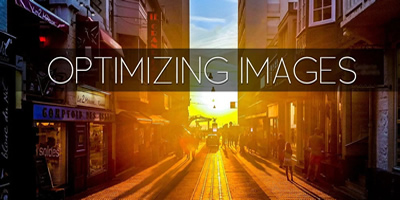Optimize Images
 It’s human nature to focus our attention on images. An appealing image that connects with your topic in a novel way can inspire users to share your content and will certainly leave an impression.
It’s human nature to focus our attention on images. An appealing image that connects with your topic in a novel way can inspire users to share your content and will certainly leave an impression.
Use unique images that are page-relevant
Users are far more likely to react to an image before they begin reading your post. Finding and using the right type of image for your website is an essential step towards success.
The web has a plethora of sources where one can easily find a picture that can be legally used for commercial purposes and also ones that have no copyright restrictions. (It’s always a good idea have all necessary permissions to use or modify the images if required.)
Image optimization is about reducing the file size of your images without sacrificing quality so that page load times remain low. It’s also about image SEO. Proper identification of product images and decorative images to promote recognition by search engines to improve ranking.
Choose the right file format
After the right image has selected, a determination of which file format is optimal for the best presentation. Since we are mostly concerned with pictures and relatively complicated “photorealistic” graphics, a choice from three commonly used raster image formats: GIF, PNG, and JPEG.
JPEG is the most commonly used image format today. It uses lossy data compression; which means that, depending on the settings, the image quality can suffer quite a bit. There is also no support for transparent backgrounds like there is with GIF and PNG formats. The biggest advantages of using this format is it keeps file sizes small and it is supported almost everywhere.
GIF is a bitmap image format used for simple art and animations. Because it supports only 256 colors, it’s not recommended for photographs or more photorealistic images. However, its small file size and support for transparent backgrounds make it ideal for company logos and various page elements of websites.
PNG is a modern alternative to GIF and JPEG file formats. PNG supports transparency, has a better color range, and automatic gamma correction ability. PNG can even store a short text description of the image’s content to help search engines categorize your images. This file format is the newest of all three, which means it’s not so readily supported. Also, file sizes can be a slightly larger.
Optimize your images for the web
Use the highest quality format possible
Search engines prefer high resolution images and high-quality content.
Web pages with images that are poor in resolution or formatted incorrectly can appear distorted on a tablet or mobile screen. Don’t sell your content short by utilizing low-quality images.
When optimizing images for the web, your goal is to reduce the file size as much as possible, without sacrificing too much in terms of image quality.
Use the highest quality format possible. Search engines prefer high resolution images and high-quality content. Web pages with images that are poor in resolution or formatted incorrectly can appear distorted on a tablet or mobile screen. Don’t sell your content short by utilizing low-quality images.
Use informative file names
For images downloaded from your camera, give them a new name that’s descriptive, making it easier for search engines to find them.
A good example would be something like this: IMG_scenery_snowymountain_2019_01.
When it comes to image SEO, it’s important to use relevant keywords to help your webpage rank well on search engines. Creating descriptive, keyword-rich file names is crucial for image optimization. Search engines not only crawl the text on your webpage, they also crawl your image file names.
Pay attention to alt text
Alt text (short for “alternative text”) is used to highlight the identity of an image when you hover over it with your mouse cursor. It also shows as text to all users when there are problems rendering the image. Additionally, it is used by screen readers that help the visually impaired navigate the web.
Alt text (short for “alternative text”) is used to highlight the identity of an image when you hover over it with your mouse cursor. It also shows as text to all users when there are problems rendering the image. Additionally, it is used by screen readers that help the visually impaired navigate the web.
Apart from the file name, search engines visually impaired people have limited information to help them figure out what a web image is about. However, by including alt text like that below, you can precisely describe the content of your picture.
Optimizing images appropriately for the web is an important step to learn and understand early and implement as a best practice. The overall goal is to get content descriptive and decorative images to rank on Google and other image search engines.


